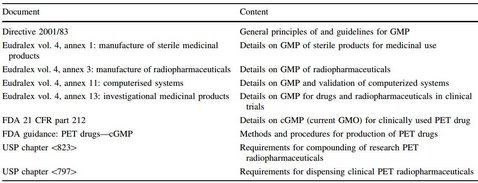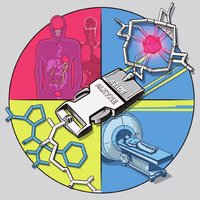Production of clinical radiopharmaceuticals: generalpharmaceutical and radioanalytical aspects

Alexander Schmidt, Margret Schottelius, Michael Herz und Hans-Jürrgen Wester
10.12.2016 [Original Artikel]
Due to successes in the development on new and powerful radiopharmaceuticals, in particular of tracers for positron emission tomography, the production of a continuously expanding spectrum of radiopharmaceuticals has become more important, even for small nuclear medicine facilities. This short review summarizes and briefly describes typically established radioanalytical routines in the quality control of radiopharmaceuticals as well as the corresponding fundamental legal documents and guidelines.
A Practical Guide on the Synthesis of Metal Chelates for Molecular Imaging and Therapy by Means of Click Chemistry

Dr. Notni und Prof. Wester
22.06.2016 [Online Artikel]
The copper-catalyzed cycloaddition of organic azides and alkynes (CuAAC) is one of the most popular reactions for rapid assembly of multifunctional molecular frameworks from commercially available building blocks. It is also attractive for synthesis of conjugates of multidentate chelate ligands (chelators) with molecular targeting vectors, such as peptides or proteins, which serve as precursors for labeling with metal radionuclides or are useful as MRI contrast agents after GdIII complexation. However, applicability of CuAAC for such purposes is complicated by formation of unwanted copper chelates. The alternative use of copper-free click chemistry, for example, the strain-promoted alkyne-azide cycloaddition (SPAAC) or the Diels–Alder reaction of tetrazines and strained alkenes, entails other specific challenges: Introduction of large, isomerically non-homogeneous and hydrophobic linker groups affects product homogeneity and can severely change pharmacokinetic profiles. Against this background, this review elucidates scope and applicability of both Cu-catalyzed and Cu-free alkyne-azide cycloadditions pertinent to the elaboration of radiometal chelates and MRI contrast agents, with an emphasis on strategies to tackle the problem of copper complexation during CuAAC.